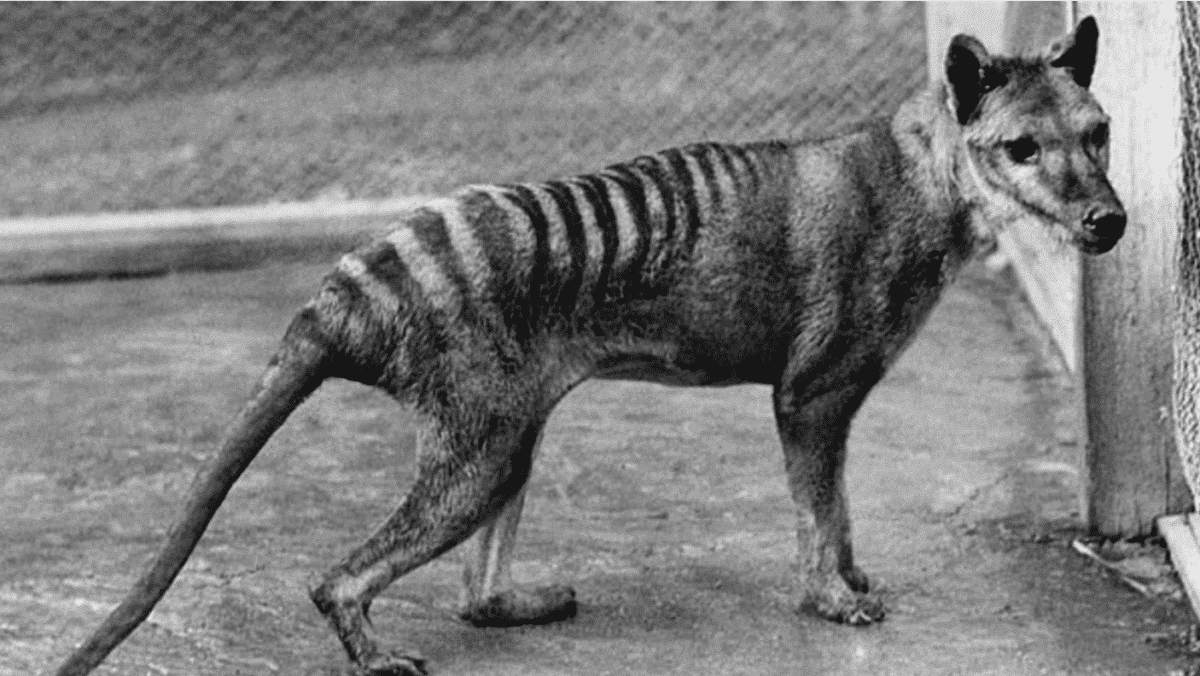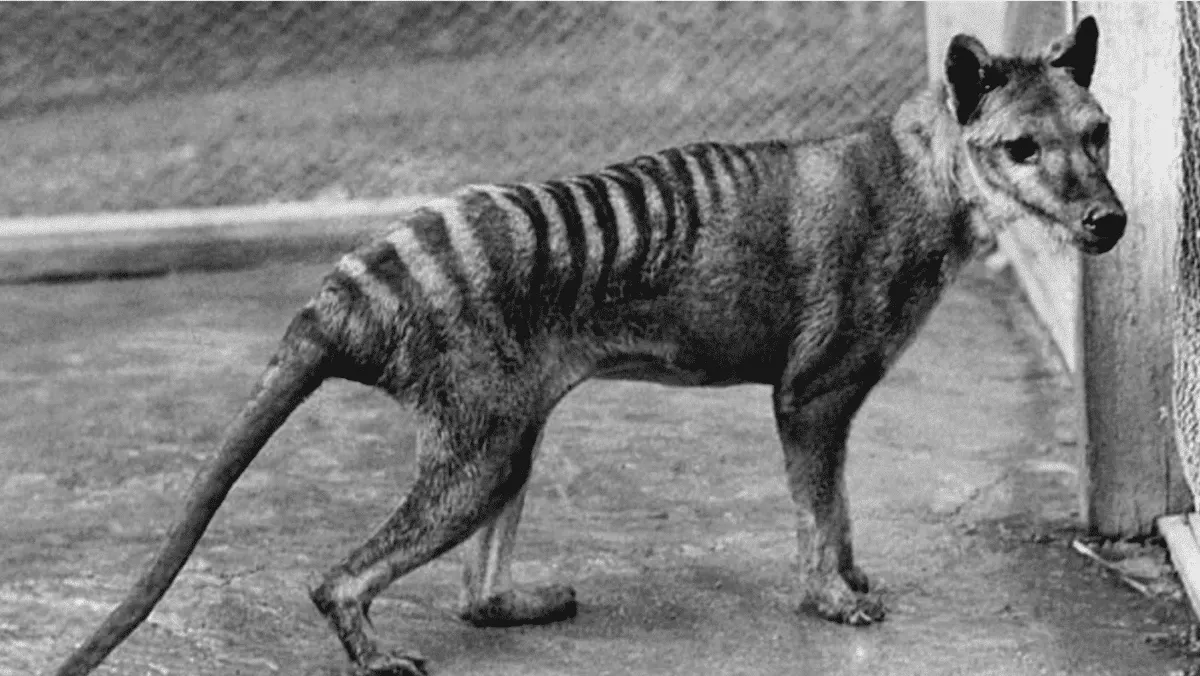Researchers at the University of Melbourne have established a cutting-edge research facility with the potential to resurrect the Tasmanian tiger species.

In a remarkable advancement, scientists have successfully extracted RNA from the extinct Tasmanian tiger. This has sparked optimism for the potential resurrection of this species.
The Extinction of the Tasmanian Tiger
The extinction of the Tasmanian Tiger, scientifically known as Thylacinus cynocephalus, is a poignant chapter in the annals of wildlife history. This unique marsupial, native to the island of Tasmania, Australia, and also once found on the Australian mainland, suffered a tragic fate primarily due to human activities. Beginning in the 19th century, European settlers in Tasmania perceived the Tasmanian Tiger as a threat to their livestock. This led to widespread persecution and bounties placed on its head. This relentless hunting, coupled with habitat loss due to land development, significantly reduced the Tasmanian Tiger’s population.
Furthermore, the species’ biology played a role in its downfall. With limited reproduction rates and susceptibility to diseases introduced by Europeans, their numbers dwindled rapidly. The last known Tasmanian Tiger, named Benjamin, died in captivity at the Hobart Zoo in 1936. Marking the tragic endpoint of a species that once roamed the Tasmanian wilderness. While there have been sporadic reports of sightings in the wild over the years, extensive efforts to confirm the species’ survival have been unsuccessful. The extinction of the Tasmanian Tiger serves as a somber reminder of the profound impact human actions can have on our planet’s biodiversity. However, ongoing scientific research and discussions about potential cloning or de-extinction techniques offer a glimmer of hope for reviving this iconic species in the future.
Check out: AI to communicate with whales?
RNA Extraction Advancement
DNA (deoxyribonucleic acid) and RNA (ribonucleic acid) are closely related biomolecules that play essential roles in cell biology. DNA is a double-stranded molecule housing the genetic code of an organism. RNA is single-stranded and acts as the messenger that interprets and translates the genetic information stored in DNA into functional processes.
In essence, RNA serves as the codebook that orchestrates the production of proteins. Thereby bringing the instructions contained within DNA to life.
The scientists successfully obtained and purified a substantial number of RNA fragments from the thylacine’s muscle and skin. Total 81.9 million and 223.6 million, respectively. Following the elimination of duplicate and extremely short sequences, they pinpointed 1.5 million unique RNA sequences from muscle tissue. A further 2.8 million distinct RNA sequences from skin samples.
Among these sequences, the researchers identified those corresponding to over 500 genes. This included crucial ones responsible for encoding actin and titin. Which are vital proteins governing muscle elasticity and contraction, as well as genes related to the structural protein keratin. Additionally, they detected a limited quantity of RNA molecules associated with viruses that either inhabited or infected the Tasmanian tiger during its existence.
Check out: Discovery of Endangered Gray Wolf Pack in Sierra Nevada California.
Why Bring The Tasmanian Tiger Back?
Find out Everything You Need To Know About the Tasmanian Tiger.
The Progress Explained Further
Published in Genome Research last week Tuesday, the study has substantiated that RNA can endure extended periods. Even under less than optimal conditions, such as when stored at room temperature in a museum’s storage closet.
At the Swedish Natural History Museum, the preserved remains exhibited a state akin to semi-mummification. This retained their skin, muscles, and bones while having lost their internal organs.
Check out: The Candiru Fish That Swims Up The Urethra.
The Video
Bottom line
In conclusion, the extinction of the Tasmanian Tiger stands as a solemn testament to the impact of human activities on Earth’s fragile ecosystems. This unique marsupial, once an emblem of Tasmania’s wilderness, fell victim to a lethal combination of overhunting, habitat destruction, and vulnerability to introduced diseases. The poignant tale of the last known Tasmanian Tiger, Benjamin, fading into history in 1936 serves as a stark reminder of the responsibilities we bear in preserving our planet’s biodiversity.
However, amidst the shadows of extinction, there is a glimmer of hope. The recent breakthrough in RNA extraction from Tasmanian Tiger specimens offers a potential avenue for further understanding this remarkable species. Even the possibility of its revival through advanced genetic research. While the future remains uncertain, this scientific endeavor underscores the importance of continuous exploration. As well as preservation efforts to safeguard the rich tapestry of life on our planet. The Tasmanian Tiger’s legacy endures as a symbol of the profound impact that human actions can have on our natural world. As a beacon of hope for the potential restoration of lost species through the progress of science.
Thanks for reading along, for more, check out our related article links below!
Next up:
- Dog Raises 3 Tiger Cubs: Years Later Something Unexpected Occurred
- Bengal Tiger Vs. Western Diamondback Rattlesnake
Join our Forum for free today!

- Why Do Zebras Have Stripes - July 23, 2024
- Huge Pet Bison Breaks Into House - July 22, 2024
- Brave Man Plays Instrument While Huge Bear Caresses His Shoulder - July 22, 2024



